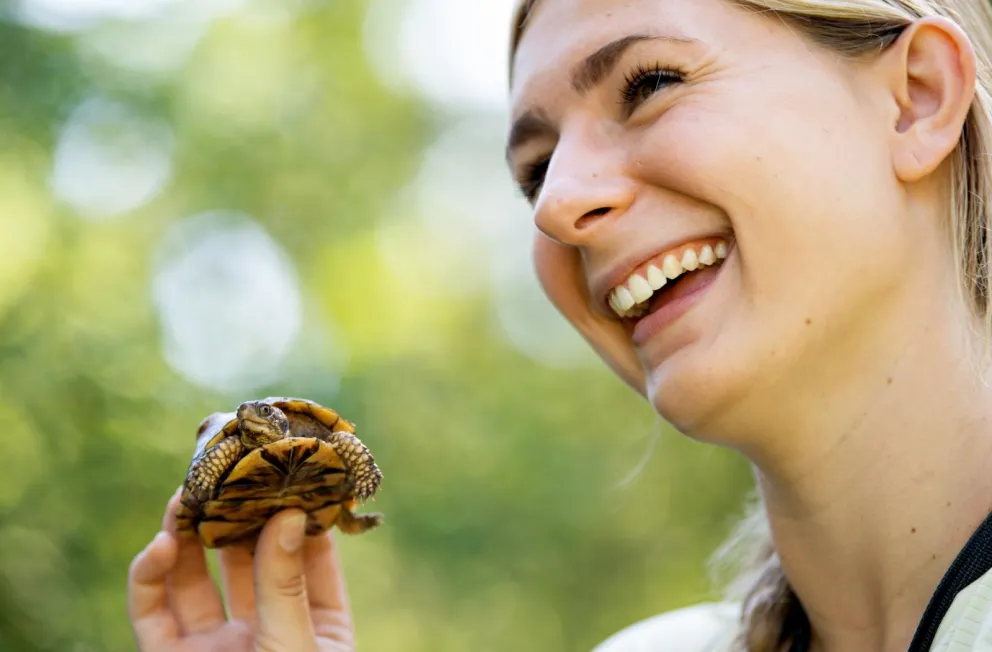Researchers from Grand Valley and John Ball Zoo have collaborated on a project to help boost a small, aging Eastern box turtle population at a Barry County nature preserve. The goal, the researchers said, is to speed up the maturation process for young turtles, who are highly susceptible to a disproportionate number of predators, particularly raccoons. Once the turtles have a mature shell, they are nearly impenetrable.
Using a conservation technique called headstarting, the researchers collect eggs from nests and then incubate them at the zoo until they hatch. Some hatchlings are returned to the nature preserve's grounds and outfitted with transmitters to monitor their progress. The other hatchlings stay at the zoo, where they are fed after birth rather than going to sleep and into dormancy, as hatchlings normally do when they are first born.
Feeding the hatchlings right after birth allows for three to four years of growth in less than a year and, crucially, enables the turtles to develop the hinge on their shells to enclose themselves when threatened, the experts said. The effort is demonstrably working, said Jennifer Moore, associate professor of wildlife biology and natural resources management.
